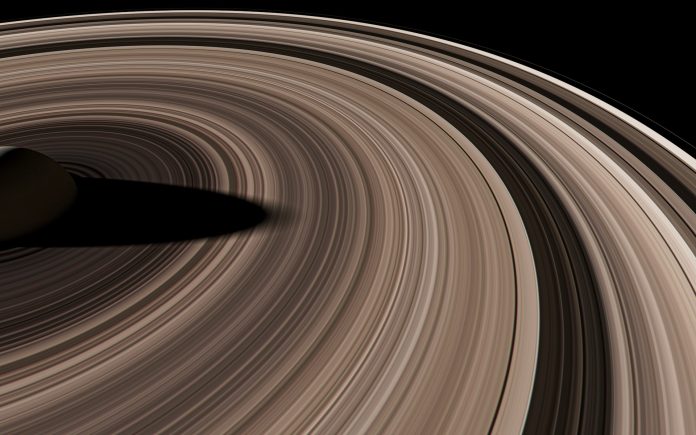
In an exciting discovery, scientists have found evidence suggesting that Earth may have had a ring system similar to Saturn’s about 466 million years ago.
This surprising idea comes from a study published in Earth and Planetary Science Letters that challenges our understanding of Earth’s ancient history.
The story begins with a period known as the Ordovician impact spike, a time when Earth experienced an unusually high number of meteorite impacts.
Researchers studying the positions of 21 impact craters from this period noticed something strange: all the craters were located close to the equator, even though most of Earth’s land was elsewhere at that time. This unusual pattern couldn’t be explained by current theories.
The research team, led by Professor Andy Tomkins from Monash University, suggests that this pattern was caused by a large asteroid that had a close encounter with Earth.
As the asteroid came near, it crossed Earth’s Roche limit, a point where tidal forces would have torn it apart. The debris from the broken asteroid could have formed a ring around Earth, similar to the rings we see around gas giants like Saturn.
Over millions of years, bits of this ring would have slowly fallen to Earth, causing the spike in meteorite impacts that scientists have observed in the geological record. Sedimentary rocks from this time are also filled with an unusually high amount of meteorite debris, supporting this idea.
What makes this discovery even more interesting is the potential impact the ring could have had on Earth’s climate. The researchers speculate that the ring might have cast a shadow on the planet, blocking sunlight and contributing to a significant cooling event known as the “Hirnantian Icehouse.”
This event, which occurred near the end of the Ordovician period, is known as one of the coldest periods in the last 500 million years.
This study not only offers a new explanation for the Ordovician impact spike but also raises fascinating questions about how celestial events like this ring system could have shaped Earth’s climate and the development of life.
Could Earth have had other ring systems at different times in its history? This research opens up new possibilities for understanding our planet’s past and its dynamic relationship with the wider universe.
Source: Monash University.



